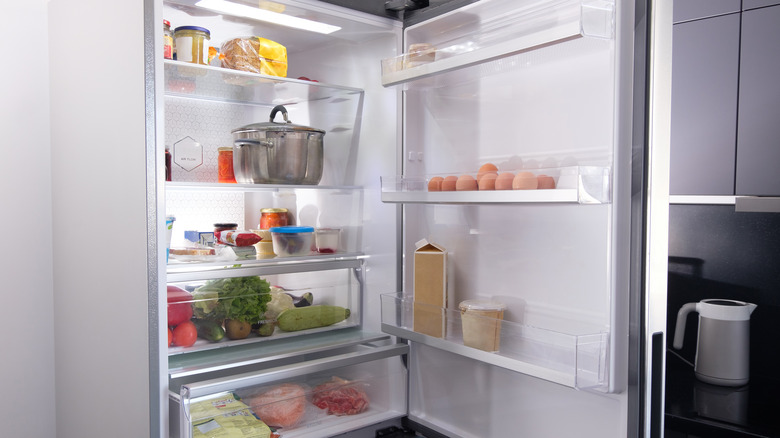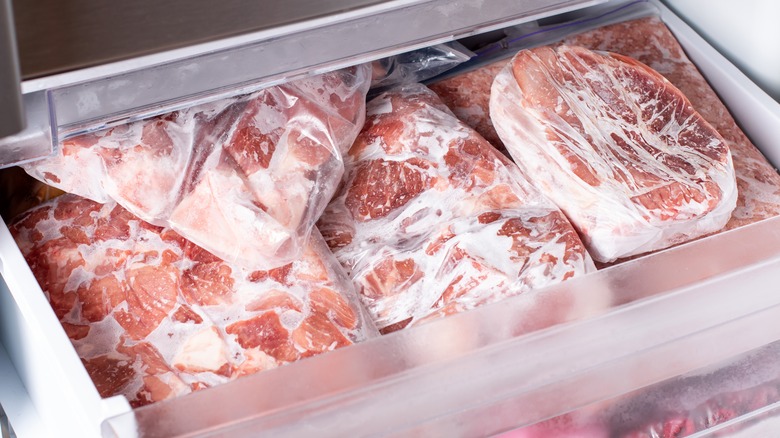Should You Thaw Frozen Meat On The Fridge Shelf?
There are so many do's and don'ts when it comes to the kitchen. The problem is, not abiding by beaten-down culinary rules can cause an influx of bacteria or something less severe — like a burnt casserole. For example, if you have ever been told to wash your chicken before cooking it, don't! According to a tweet from the CDC, that action can cause germs that spread to other kitchen utensils.
One of the age-as-old-as-time food debates often comes around when you are talking about meat. Specifically, how does one defrost frozen steak properly? Many have been taught to take the meat out and leave it at room temperature on the counter the day they plan on cooking it, while others stick the filet mignon on the refrigerator shelf the day before. So, what's the correct way? According to the USDA, utilizing the refrigerator, cold water, or microwave method for thawing meat are all safe methods.
You can refrigerator thaw, but here's a tip
The USDA explains that perishable foods should not be left at room temperature for more than two hours, or bacteria may multiply quickly. Instead, the government service advises that you utilize the method of refrigerator thawing anything from your giant Thanksgiving turkey to your package of small chicken breasts. You should always allow for a full day for the meal to fully defrost, so plan ahead!
According to Kitchn, there is a proper way to store your frozen food on the refrigerator shelf that doesn't leave room for bacterial overgrowth. Due to the fact that most freezer foods are wrapped in vacuum bags or several layers of packaging, it is important to recognize that even seemingly sturdy packaging can become worn or torn. That's why you should grab that frozen meat and place it on a suitable plate or rimmed baking sheet before popping it in the fridge. The baking sheet will contain any liquid or juice before any sort of contamination comes into play. Now you are ready for that T-bone steak dinner!

